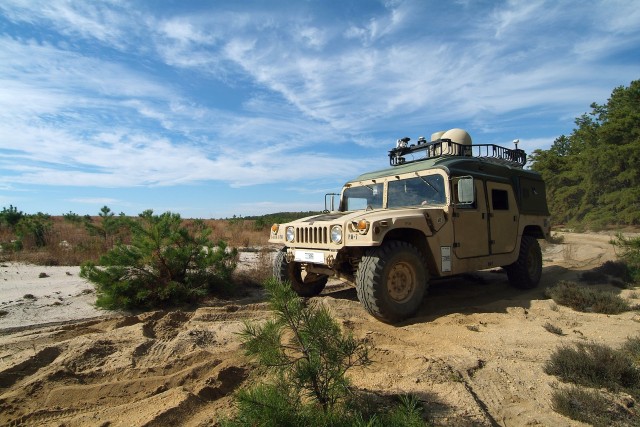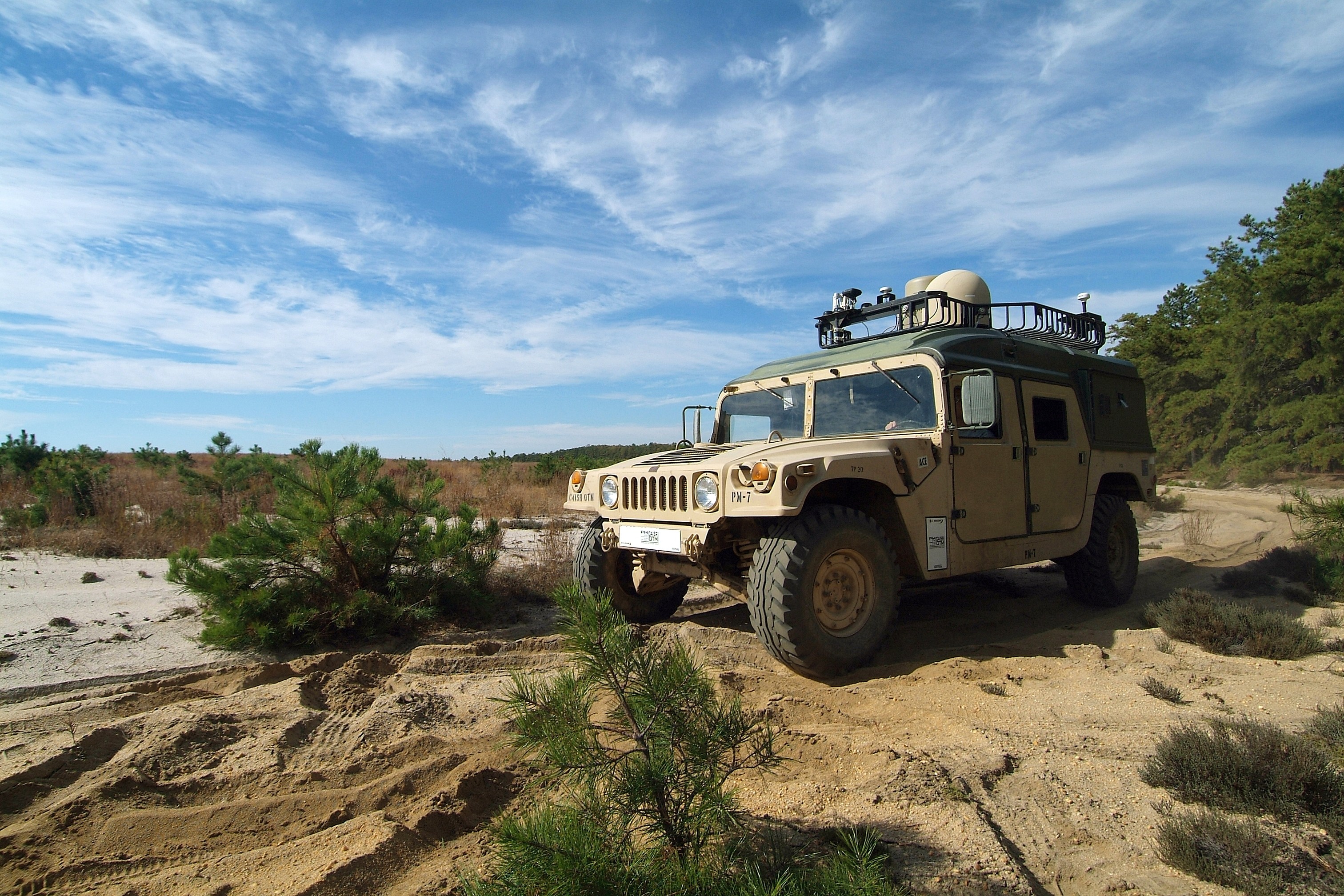In the future, the Army will continue to provide many capabilities to enhance the Warfighter's ability to fulfill his or her mission. Its communications pipe will expand to allow for such capabilities.
"We have a propensity to fill whatever we happen to put out there," said Col. William C. Hoppe, project manager for the Army's Warfighter Information Network-Tactical.
Known as WIN-T Increment One (formerly the Joint Network Node-Network), the communications pipe used by today's Soldier is filled with information that includes Command and Control applications and sensor-based video of the battlefield.
Bandwidth amounts will expand in WIN-T's three remaining increments to support that data, as applications will always continue to fill the Army's network.
Future applications should be created with this in mind, Hoppe said.
"Part of the challenge is using that bandwidth smartly, because it's not like a dial that you can just turn and crank up the amount of bandwidth that you have," he said. "At some point it is finite. The spectrum is finite, so we have to find ways to use it smarter. Not just make the pipes bigger but make our applications smarter and make our use of that finite spectrum more efficient."
The remaining three WIN-T increments will allow the application's data to be pushed to increasingly lower echelons, Hoppe said.
The immediate difference between WIN-T Increment One and WIN-T's subsequent increments is WIN-T Increment One provides communications capabilities at the quick halt, where "you basically have to stop to communicate," Hoppe said.
WIN-T Increments Two and Three will bring the initial and full on-the-move capability, where stopping is not required for communications, to the entire Army.
Hoppe used a cell phone scenario to illustrate the differences between the separate increments,
"Your cell phone is a mobile device, but as soon as you leave the coverage area of your cell phone tower, you drop your signal," Hoppe said. "That's Increment One, where you have comms (communications) at the halt within a footprint.
"In Increment Two, we're going to take that cell tower equivalent infrastructure and we're going to move it along with the mobile device, so you have comms (communications) every place you have your infrastructure.
"Increment Three brings in air tiers, so that we don't always have to go to satellites, and it rolls it out to the rest of the Army and brings us some of our required configurations needed in order for us to support the Future Combat System brigades.
"Increment Four is a little more specialized. That's where we're taking advantage of the secure anti-jam, low probability detection satellite communications off of things like TSAT (the Transformation Satellite Communications system) into our radio systems."
The story behind WIN-T Increment One began with the launches of 2001's Operation Enduring Freedom in Afghanistan and 2003's Operation Iraqi Freedom. The system was developed as an immediate response to the need for a beyond line-of-sight communications pipe. Its predecessor, the 20-year-old Mobile Subscribe Equipment network, only provides line-of-sight communications.
Mobile operations continue today, where commanders are provided with "huge flexibility" to move his or her infrastructure while maintaining communications, Hoppe continued.
"In today's fight, when they're in the FOBs (Forward Operating Bases), they can rely on stationary or at-the-halt comms," he said. "But, as we start moving people out into these combat outposts and we move in to set up temporary things as we retake areas; we need to be able to take that infrastructure and set it up quickly, either as we're getting there and set it up quickly for them to be able to have comms. All of that comes with Increment One and Increment Two."
Satellite communications are a focal point of the present fight, he said. Commercial, KU band satellites, are greatly needed for command and control operations. Department of Defense initiatives, such as the recent launching of the Wideband Global SATCOM satellite, will reduce some reliance on commercial KU, he said. The satellite, which is said to provide more than 10 times the communications capacity of its predecessor, the Defense Satellite Communications System III, was successfully launched on Oct. 10.
The ability to maintain communications links beyond the Warfighter's vision range will also play a role.
"It has given flexibility to the Commanders," he said. "They like being able to communicate beyond one's line-of-sight. That's something that (WIN-T Increment One) currently provides and that the air tier will eventually provide when we get to Increment Three."
WIN-T provides the communications pipe that allows Commanders to connect to Army Battle Command Systems 6.4 or situational awareness-related systems that allow them to make quicker and more effective decisions, Hoppe said.
ABCS 6.4 is a suite of digital systems that include capabilities such as intelligence reports, digital fires planning, logistics layouts and terrain analysis.
"It's allowed the Commanders to take those applications that they currently have and use them in a continuous fight," he added. "They sometimes haven't had the opportunity to use them before, because they have had disconnected comms."
A broken communications link prevents the update of battlefield progress and the common operational picture that commanders share, he said.
"Now, we can continue that operational link, so that those common operational pictures stay populated," he said.
The future's 30 node test, limited user tests, and the Initial Operational Test and Evaluation will be critical steps, as was the WIN-T demonstration days held on 5-6 Nov., Hoppe said.
The demonstration day was held to allow senior leaders to, "see what we are seeing in terms of progress," he said.
The VIP Day was an opportunity to educate the Army community on WIN-T and demonstrate its early progress, he said. It was a chance for members of the community to see and touch things that were not real five months prior. Attendees could eventually compare the progress between the VIP Day and the next WIN-T event, Hoppe said.
"If they don't get an opportunity to see the real thing, except at major test events, then they can't gauge the progress and they don't get to get as excited about where we're at as we are," Hoppe said. "We get to see the stuff, some of us daily, and see how real it really is. We get to make it real for them."
PM WIN-T is assigned to the Army's Program Executive Office for Command, Control and Communications Tactical, which is headquartered at Fort Monmouth, N.J.


Social Sharing